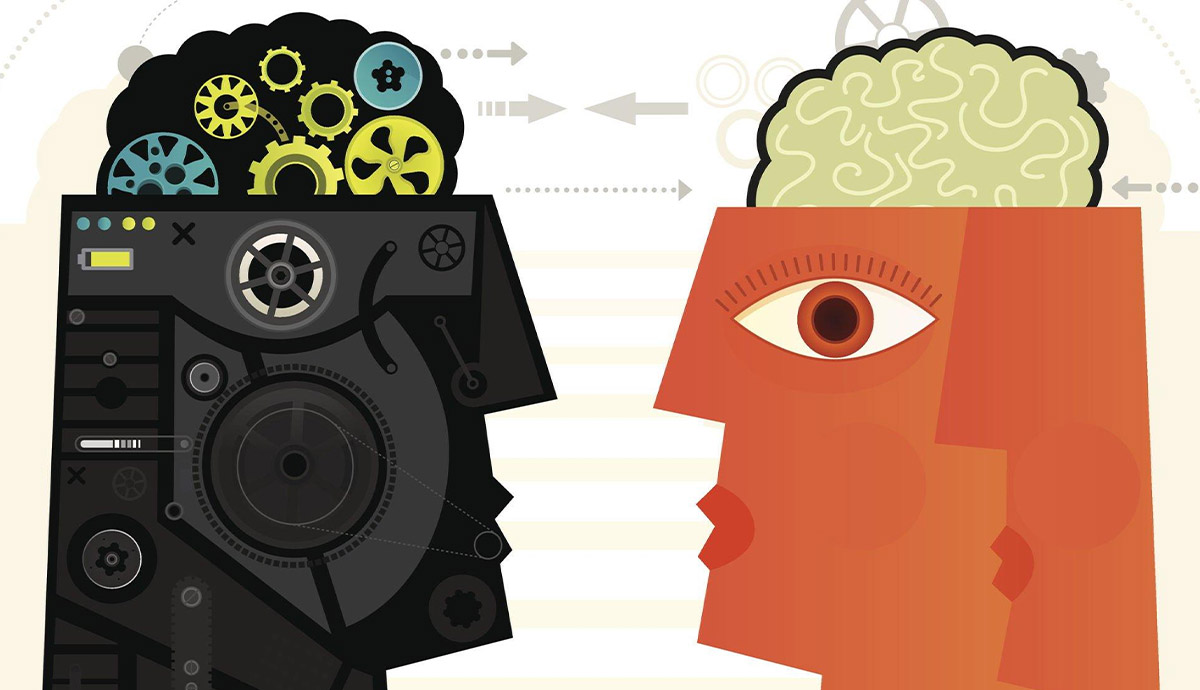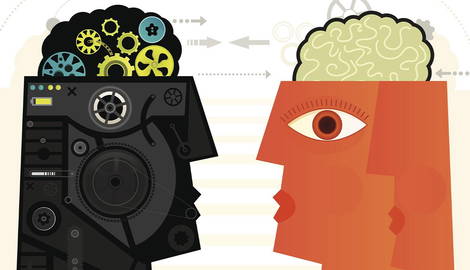
The quest to explain human behavior is thousands of years old. Thinkers and researchers debated whether humans are driven by metaphysical powers, intrinsic processes, or our environments. Born in the early 20th century, behaviorism posits that behavior is merely shaped by external influences and can be modified to achieve desired outcomes, leaving the internal richness of the human experience be damned.
Behaviorism has influenced modern psychology, education, management, marketing, and even human-computer interactions. With the recent developments in AI, the question of whether human behavior is no more than a malleable mechanism is more relevant than ever.
Behaviorist Psychology for the Industrial Age: Simple, Practical, Controllable

Human behavior is a complex amalgam of emotions, cultural norms, and experiences. Every decision we make, every action we embark on, seems fueled by an interplay that is almost impossible to understand. Research, however, is not a fan of accepting the mystery of human behavior.
Before behaviorism, psychology was dominated by abstract ideas about the mind. Psychologists of the time analyzed the building blocks of consciousness experiences—sensations, perception, and feelings. Others took a slightly different approach and looked at behavior in the context of evolution, trying to understand how certain behaviors could have put us ahead in the natural selection game. However, all these methods were connected by the thin thread of subjectivity: almost impossible to test through experimentation, they were left for the brilliant minds to ponder and argue.
Enter behaviorism, which made observable behavior the star of the show and cast mental processes into the shadows. Soon enough, its scientific and objective methodology would take academia by storm.
To understand how this drastic shift occurred, we need to take a peek behind the curtains and into the socio-economics of the time. The early 20th century was a period of change, where the rise of industrialization and urbanization created an overarching demand for practicality. With the invention of machinery, there was a certain appeal to seeing behavior as just another mechanism. Simplified and broken down into understandable parts, it could fit almost perfectly into the reductionist, deterministic, and predictable frameworks of the era.
Are Humans Born as Clean Slates?

“Give me a dozen healthy infants, well-formed, and my own specified world to bring them up in and I’ll guarantee to take anyone at random and train him to become any type of specialist I might select – doctor, lawyer, artist, merchant-chief, and, yes, even beggar-man and thief, regardless of his talents, penchants, tendencies, abilities, vocations, and race of his ancestors.”
Watson, 1930
This quote belongs to John B. Watson, the father of behaviorism. He was the first to declare that psychology should focus solely on observable behavior and completely abandon the study of consciousness and mental processes. Watson believed that humans were born as clean slates and have the potential to become anything if the circumstances are right.
Watson tried to prove this concept with the “Little Albert” experiment, where he presented a nine-month-old infant, Albert, with various animals: a white rat, a rabbit, and a monkey. As children tend to be fearless and naive, the boy wasn’t scared of the animals. Watson then began to pair the presentation of the rat with a loud, jarring noise. Soon enough, little Albert began to cry when he saw the rat, even in the absence of any noise. Watson succeeded in manipulating human behavior through environmental factors alone.
It is unnerving that with enough control, we can mold a child into a product of our choosing. Suddenly, the thinking, breathing human being becomes a machine with a control panel.
These kinds of experiments seem to perpetuate the idea of humans as lacking free will; in other words, they lead us toward a deterministic view of human behavior. Everything we will ever be or do is but a logical continuation of who we are now. None of our choices or feelings can ever matter because there is no such thing as real agency—just a collection of circumstances. And it was up to behaviorists to find these circumstances.
Observable Behavior Takes the Center Stage

Behaviorists attempted to redefine behavior by showing that no matter how complex, it could be broken down into smaller, observable, and understandable parts. They saw humans as passive responders to their environments, believing that thoughts and emotions are just superficial byproducts and don’t drive actions. To prove these concepts, behaviorists conducted experiments where they controlled different environmental circumstances and recorded changes in behavior.
In one such experiment by Albert Bandura, children watched a video of adults aggressively playing with a Bobo doll. As expected, children would then replicate this behavior when seeing a similar doll. This experiment discovered the concept of observational learning with a simple premise: children repeat what they see.
True learning, however, is not a simple “copy” and “paste.” Children need to know whether certain behaviors are good or bad. Similar to how burns teach our brains to avoid touching fire, we need to link behaviors to “good” or “bad” outcomes to perpetuate or deter them. This process of linking behaviors to positive or negative associations is called conditioning and was shown in one of the most popular experiments of the behaviorist movement—Pavlov’s dogs.

Pavlov trained his dogs to salivate on cue. He paired a serving of food with the sound of a bell. At first, the dogs only got excited when they saw food, but just several repetitions later, they began to salivate at the sound of the bell alone. And voila—a new learned behavior! Later, Skinner found that by tapering the frequency and timing of the rewards, he could gain more control over the desired behavior. This meant that through careful analysis and manipulation of the environment, behaviors indeed could be shaped to desired outcomes.
These and many more behaviorist experiments showed the functional aspect of behavior: we do things that we associate with rewards of some kind. But even with this premise, how could they set aside everything that makes us human: every convoluted thought, every discrepancy, every acte gratuit? Wasn’t the desire for a “good” outcome of behaviors still directly related to emotions? Was this reductionist approach nothing more than cynicism? The short answer is no. The focus on observable behavior didn’t necessarily deny the existence of the underlying mental processes that, for instance, allowed for conditioning. Instead, behaviorism placed consciousness into a black box. It didn’t matter why and how the cogs turned as long as the output made sense. The problem, however, is that science doesn’t really like black boxes.
Cognitive and Humanistic Psychology’s Critiques of Behaviorism

As with any game-changer theory, behaviorism invited criticism from day one. Early academic scrutiny focused on the movement’s reductionist views. Centuries of anthropocentrism solidified humans as deserving of being put on gold-plated pedestals; how could humans be no different from simple creatures like dogs?
A bigger wave of criticism, however, came from the cognitive revolution of the 50s, when psychologists finally peeked inside the black box of the mind. They resurrected the inner richness of human experience in the form of perception, attention, and memory, employing all those terms to explain behavior.
The second round wasn’t far behind. This time, humanistic psychology, armed with emotions, empathy, and understanding, demanded justice for subjective experiences. As its name suggests, this movement placed the uniqueness of human experience at the center stage. Once again, humans were viewed as freely acting agents with the capacity for personal growth and self-actualization.
Modern Behaviorism and Its Legacy

Regardless of all this scrutiny, behaviorism didn’t perish. Instead, in an ironic plot twist, it molded itself in the light of changing circumstances.
One such adjustment was a fusion with cognitive psychology and the consequent birth of cognitive behaviorism. Embracing the best of both worlds, psychologists showed that people not only responded to external stimuli but also processed information internally. Nowadays, cognitive behaviorists seek to understand how thoughts, beliefs, and attitudes contribute to behavior and use this understanding to develop interventions to change detrimental behaviors.
This later gave rise to a now-widely used cognitive-behavioral therapy (CBT). In its essence, CBT links the person’s thoughts and feelings to their behavior. Its core premise—that negative thoughts and beliefs can lead to negative emotions and maladaptive behaviors—allows therapists to trace and redirect patients’ thinking patterns, ultimately improving their mental health and well-being.

In hindsight, it is understandable why early behaviorists cast off the inner richness of human experience: it is simply not quantifiable. Researchers of the time had no way of applying scientific methods to studying the “mind.” There was nothing to measure and no factors to influence, leaving “pondering” as the only source for new, essentially untestable theories. Thus, they opted for the reasonable alternative: focus on observable behavior in all its rational appeal.
The change came with the rise of neuroscience. Essentially, neuroscientific tools let us see directly into the alma mater of the mind: the brain. With brand new equipment, researchers were now able to not only measure processes in the brain but influence them down to the molecular level. Using now almost a century-old behaviorist methods, modern neuroscientists correlate observable behavior with the processes in the brain, getting closer and closer to understanding the almighty mind.
Bibliography
Watson J. B. (1924). Behaviorism. People’s Institute Publishing Co.









